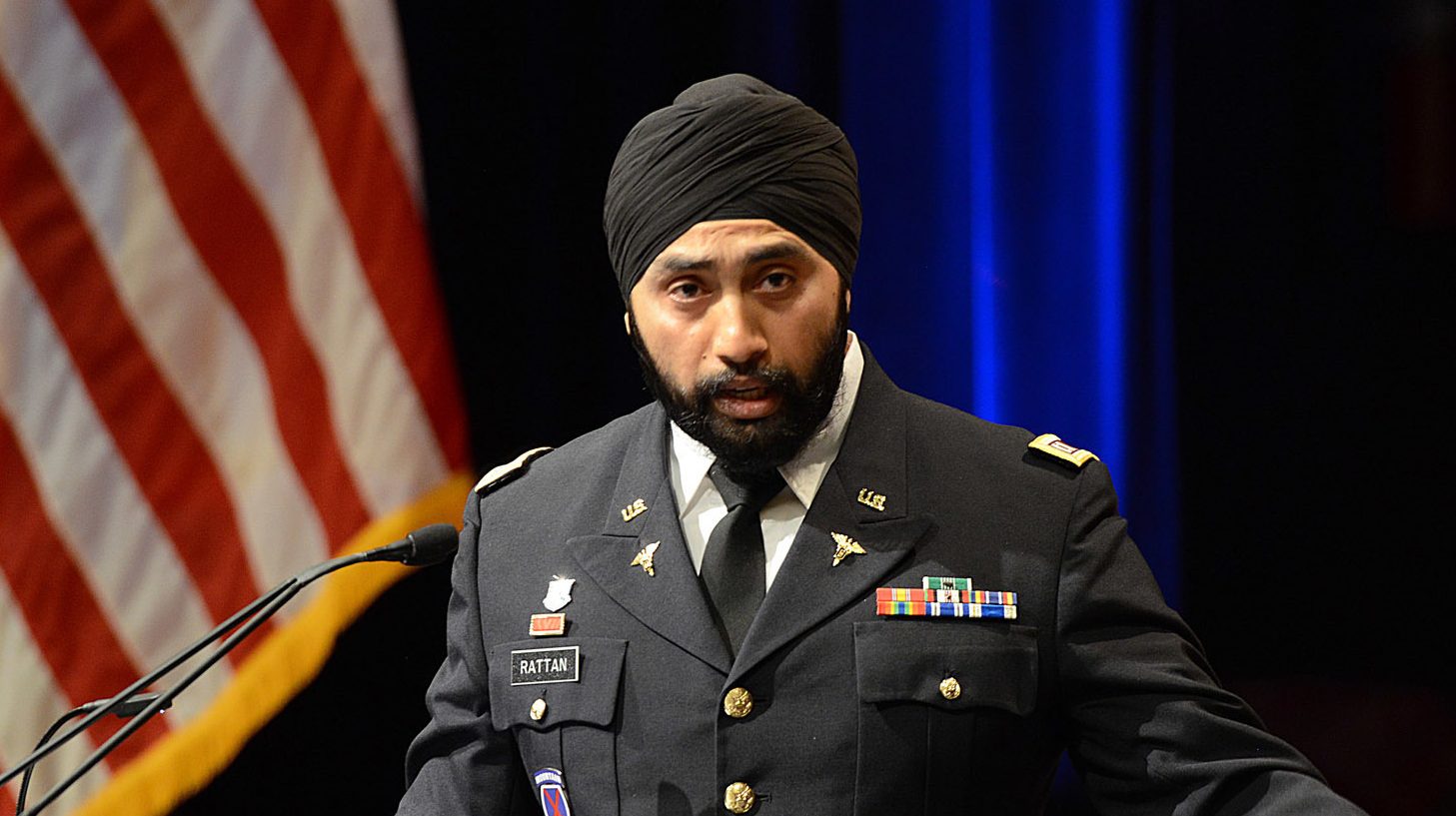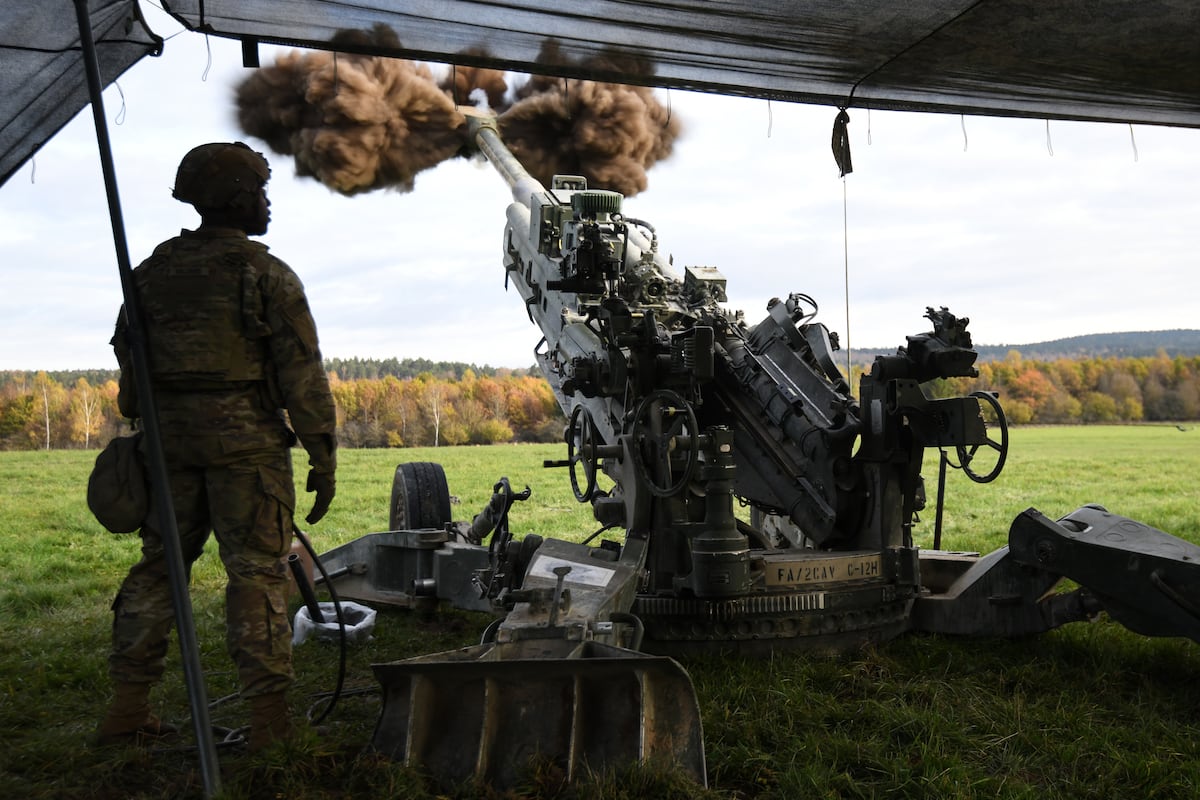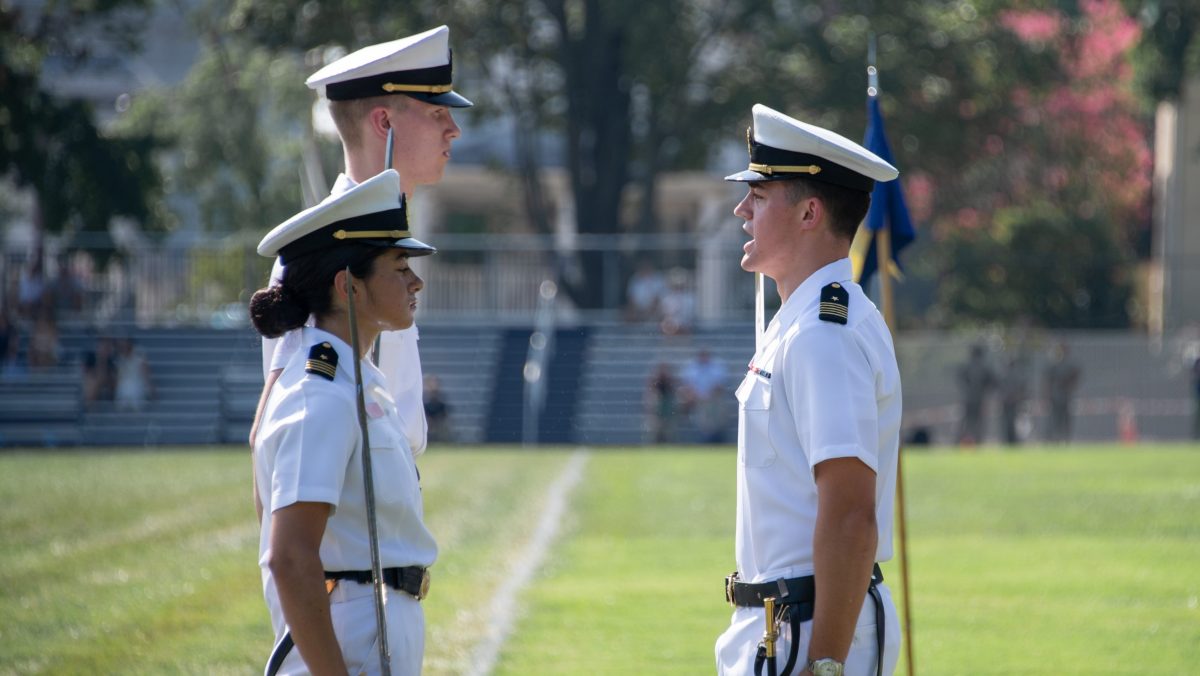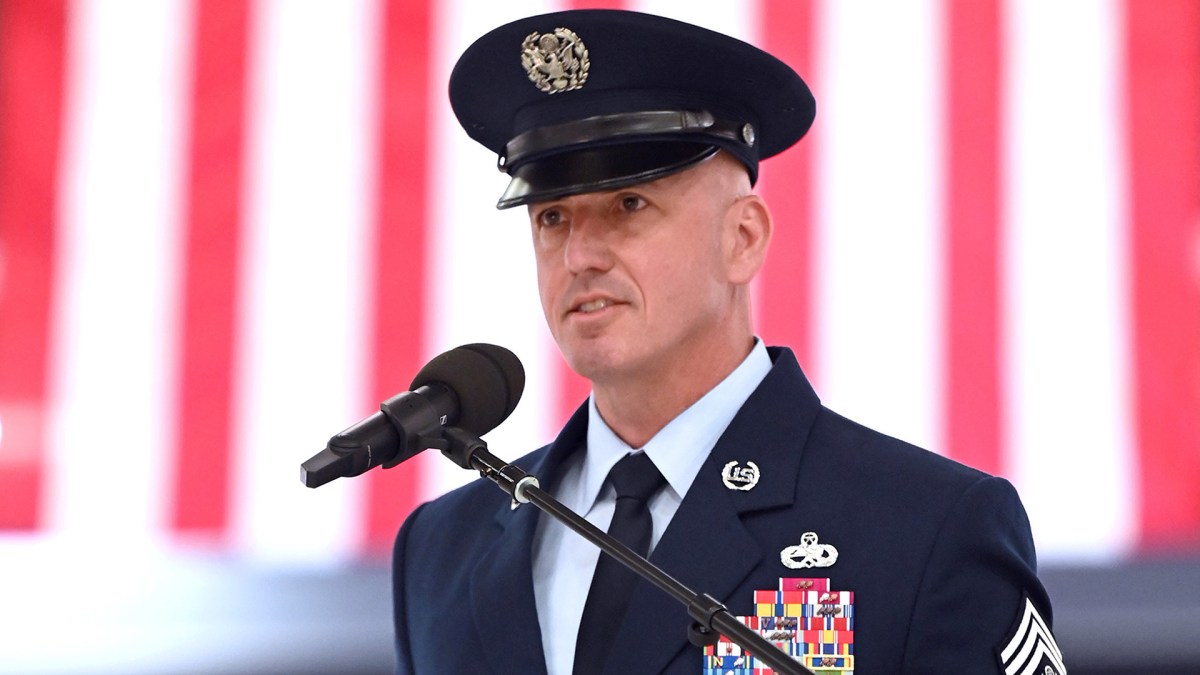
Army Capt. Tejdeep Rattan speaks at the Pentagon. Defense Secretary Pete Hegseth indicated in a speech this week that religion-based accomodation for shaving in the military may be on its way out. Chief Petty Officer Lisa Ferdinando
Wearing beards is a core religious tenet of some faiths, which has prompted the military to grant religious accommodations to Sikh, Muslim, Christian, and Norse Pagan service members for over a decade.
But those days may be ending.
This week’s overhaul of military grooming standards has raised fears of a coming crackdown on religious waivers for growing beards.
“Today at my direction, the era of unprofessional appearance is over,” Defense Secretary Pete Hegseth announced on Tuesday. “No more beardos. The age of rampant and ridiculous shaving profiles is done.”
Shaving and beards were central topics in a speech Hegseth gave to hundreds of generals and admirals at Quantico, Virginia on Tuesday. Along with amplifying an earlier directive that troops with medical waivers for shaving could face separation, Hegseth indicated that he may be skeptical about at least some religious waivers that service members have received to wear beards.
Top Stories This Week
“We don’t have a military full of Nordic Pagans,” said Hegseth, who has not hesitated to endorse open religious practice as the department’s leader, including hosting Christian prayer services in Pentagon facilities. “But unfortunately, we have had leaders who either refused to call B.S. and enforce standards, or leaders who felt that they were not allowed to enforce standards. Both are unacceptable.”
‘Sincerely held’ beliefs vs. military standards
The Sikh Coalition, a group that has advocated for Sikhs in the military who want to wear turbans, beards, and other visible signs of their faith, has issued a statement saying it is “angered and deeply concerned” about Hegseth’s comments about grooming standards.
“At this time, we are on high alert to understand what the new guidance may mean for our current and former clients across multiple branches of the U.S. Armed Forces,” the statement says. “As our nation’s largest employer, what happens there affects the religious rights of Sikhs throughout the public and private sector. Time and time again, Sikhs have shown that exercising their freedom of religion — one of the foundational rights that members of the military fight to uphold — does not make them less capable of honorable and effective service.”
The uncertainty about whether Sikhs will still be able to receive religious waivers for their beards and hair has prompted discussions on Reddit.
Following Hegseth’s speech, the Pentagon posted several memos from the defense secretary on its website including one dated Sept. 30 announcing the implementing guidance for new grooming standards for facial hair.
“The Department will revert to pre-2010 standards; facial hair waivers are generally not authorized,” the memo says.
Get Task & Purpose in your inbox
Sign up for Task & Purpose Today to get the latest in military news each morning.
A request by Task & Purpose for specifics of “pre-2010 standards” was not answered.
Service members’ requests for religious accommodations allowing them to wear beards will be reviewed per the U.S. military’s instruction on “Religious Liberty in the Military Services,” Hegseth’s memo says. Troops must provide documentation showing “the sincerity of their religious or sincerely held belief” that must be “sufficient to support a good faith determination by the approving authority.”
“Approvals will be limited to non-deployable roles with low risk of chemical attack or firefighting requirements,” the memo says.
Most branches do not track waivers
When asked if the new grooming standards are intended to reduce the number of troops who are granted religious waivers to grow beards, a Pentagon official referred Task & Purpose to the Sept. 30 memo and Hegseth’s remarks on Tuesday.
Of the military’s branches, only the Marines provided details on the number of shaving waivers granted on religious grounds. Maj. Jacoby Getty, a spokesman for Manpower & Reserve Affairs, said that 50 out of 101 religious accommodation requests for beards were granted since 2020. That number includes service members who have since separated or are no longer in active or reserve status, he said.
“Each religious accommodation case represents a distinct decision based on individual circumstances and specific details of the request,” Getty said in a statement to Task & Purpose. “While accommodations granted prior to July 2024 may have different conditional approval language, since July 2024, approvals have included provisions for temporary removal of accommodations based on operational necessity (including named operations, imminent danger/hazardous duty situations, and exigent circumstances). These current provisions align with the intent of Secretary Hegseth’s new guidance, though the service will require time to assess and evaluate existing accommodations to ensure full compliance.”
It is too early to tell if the Marine Corps will issue fewer religious accommodations for beards going forward under the new grooming standards, Getty said.
As of Feb. 27, the Navy has approved a total of 53 religious accommodations for fiscal year 2025, according to an official website for the service, which does not specify how many of the requests were specifically for beards. The Navy approved 334 requests for various religious accommodations and denied nine in fiscal year 2024.
The Army assesses religious accommodations to its facial hair policy “on a case-by-case basis,” said Army spokesman Maj. Travis Shaw.
The Department of the Air Force does not track how many airmen and Space Force guardians have been granted waivers to wear beards on religious grounds because that authority “has been delegated to the lowest appropriate level,” a department of the Air Force spokesperson said.
In the coming months, the Department of the Air Force will implement the new guidance on beards, the spokesperson said.

Task & Purpose Video
Each week on Tuesdays and Fridays our team will bring you analysis of military tech, tactics, and doctrine.

.jpeg)




















.jpeg)













 English (US) ·
English (US) ·